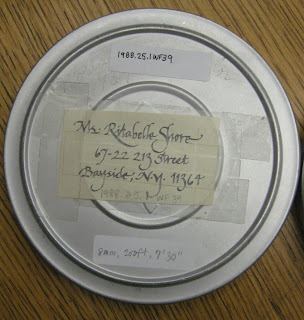I met with Sorensen, Cathy Frankel, VP for Exhibitions and Collections, and Brett Rodgers, Online Marketing and Communications Manager, to discuss our project planning. When Designing Tomorrow leaves the National Building Museum on July 10, 2011, for its two-year tour we hope to have a portion of 1938-1940 amateur film content described for public viewing and would like to work with exhibition sites and to perhaps provide continuing content for the Designing Tomorrow blog.
As the project team begins to learn about the period of 1938-1940 and about the Fair we will develop keywords through discussions among subject experts, catalogers, curators, and researchers. From their saturation with the 1930s fairs, what are the National Building Museum team members thinking? In the exhibition there were clear themes relating to industrial design, domestic consumption, the corporations, the buildings, travel to the fairs, buses, trains, and most certainly the automobile. From this we may be on the lookout for amateur film coverage of travel from and to the Fair and to engagement with the city and coverage of home life.
Delightfully, Brett asked that we consider tagging camera information when possible. We discussed visual evidence of tripod use, of static shots and of the "garden hose" vertiginous pan. Film gauge will of course be recorded, and specific camera models may be tagged through donor information and use of "Identification Marks Used In Substandard Motion Picture Cameras," coding on the film frame edge left by specific makes and models of cameras. See Alan Kattelle's Home Movies: A History of the American Industry, 1897-1979, Appendix 11.
On Monday, February 7, I visited Louise Weinberg and Jodi Hanel at the Queens Museum of Art with a tour by Louise of Luis Márquez in the World of Tomorrow: Mexican Identity and the 1939-40 New York World’s Fair. The Queens Museum of Art is steeped in the Fair, being located in the New York City Pavilion of the 1939-1940 Fair, currently under expansion for opening in 2013. Several 8 mm. cans were on site and we discussed approaches to obtaining information on the creators.

